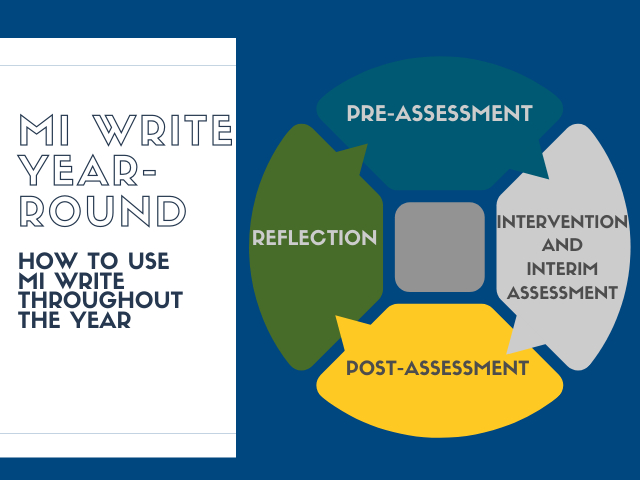
We know that it’s May, and you’re exhausted. You don’t even have time to think about next year, but now is the best time to start thinking about the fall while every successful moment and every failed lesson are fresh on your mind. Use those reflections to start planning for next year!
You don’t want to have to think about how you’re going to pre-assess your class while you’re getting to know a new group of students, getting a feel of the class atmosphere, and trying to remember new names and new faces (don’t get the Santos twins mixed up!). Having a game plan already in place will allow you the time and brain power to really give your best to kick the year off right.
How can you do that?
It is important to get an idea of where your students are at the beginning of the year so that you can address potential learning gaps, identify strengths and weaknesses, and truly gauge progress throughout the year. We’ve shared how to use MI Write as a screening tool before, but now we want to give you a picture of what MI Write looks like as a full-cycle tool for the whole year, guiding instruction, supporting students, and showing growth at this time next year.
FALL
Using MI Write, start out the year with a general writing assignment. Create a compelling prompt for a start-of-the-year writing activity, and, when students have completed their writing, file the prompt away because you’ll need it again in the spring. This will give you a baseline from which you can gain insight into who your students are, what they know already, and potential problems. It can also help you determine initial student grouping. Seeing the breakdown of writing skills in each student’s analysis will give your writing instruction more intentional direction.
Data from this assessment can be used to guide students who may need early interventions if they are not quite where they need to be. You can create centers in which some can work on the writing traits that they need the most help with, and students can engage with the mini-lessons hyperlinked in their feedback to get more practice with a specific skill.
WINTER
Now it’s time to check in with your students to see where they are in their learning. Assign another writing prompt with comparable conditions as the first one – did you use the timer or set a limit on drafts? – in the same genre with the same general expectations. What are their scores like after this essay?
This interim assessment is a great way to see how your students are learning. Some may be falling behind or still not understanding concepts taught thus far. Some students may be advancing more quickly than you thought. Looking at the writing analyses for your students will give you an idea of what they are excelling in and what they need more help with.
Checking in with your students at this point in the year would also give you data to reassess your student groups. Which students are strong enough in a certain trait and would be great at helping other students who understand the trait but aren’t as confident in expressing it? Do you have students who struggle with a trait completely and could use some one-on-one or small group remediation or extra practice? You want to reach your students where they are and try to guide them to deeper understanding. Having this benchmark assignment in the middle of the year is an effective way to stay in touch with your students’ learning.
SPRING
Towards the end of the year, before testing season is in full swing, it’s a great idea to check in one last time with your students. This time, give them the SAME prompt that they used at the beginning of the year in the same conditions. They should have only seen this prompt in that very first writing assessment. This will ensure meaningful and valid results from this post-assessment and you will have something to compare to, apples to apples. Not only will you have access to the writing analysis where your students’ writing is broken down and evaluated on The Six Traits of Writing, but you will also see the percentile rank and stanine scores. These national norms are a quick and easy way to see how much your students have grown. To learn more about these national norms, check out this blog post.
The data from the first essay and the last essay can have a tremendous impact if included in student portfolios. Teachers who will have your students next year will have a better idea of where to begin.
This post-assessment data can also be good to use in your own end-of-year evaluations. It can show where your students were in the beginning and where they are now, and you can have a conversation with your administrators about how you were able to help your students grow.
It would be difficult to have that discussion with your principal if you never took the time at the beginning of the year to get that baseline data from your students. So as you are wrapping up and reflecting on this year, make a note to include MI Write as a full-cycle tool in your writing instruction next year. You’ll have a little less stress in the fall! Contact us if you would like more information on MI Write.


